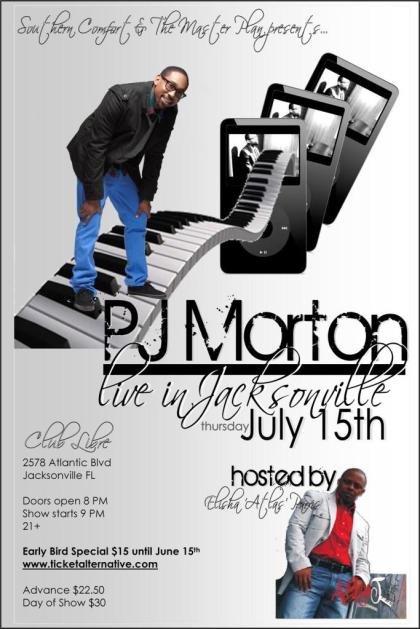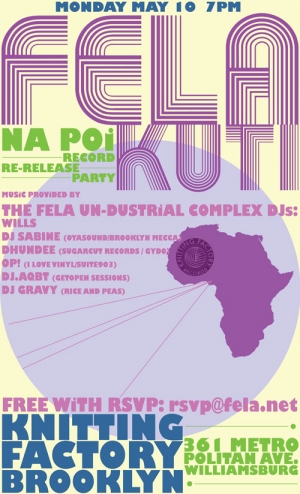Cuts to law-enforcement will open deeper gashes in society.
The next few weeks will offer some tangible clues as to the direction our country is going in, for better or for worse. Cities nationwide are now immersed in what will be, for many, the third straight year of tense, tumultuous budget negotiations sure to satisfy no one. Of course, it’s year four in Florida, thanks to future US Senator Charlie Crist, who may end up the only sitting governor in America to ever get elected to anything else. The White House has reportedly thrown backchannel weight behind Crist, perhaps in gratitude for his helping to start the recession that swept Obama into office, while Kendrick Meek may be out before football season starts.
While “Charlie the Triangle” pursues his promotion—or, at least, a remarkable lateral shift—hundreds of police officers are losing their jobs nationwide (including here in Florida) while almost all the rest will have to get by on pay cuts, hiring freezes, and less of the stuff they need to do their impossible job the best they can. Some officers are being demoted as departments get scaled-back; one New Jersey cop had the equivalent of $10,000 shaved from his salary. No wonder that cities like Newark and Trenton are lurching toward civil emergency status.
Even as the pols prepare to (pardon the pun) pull the trigger on the broadest program of national austerity in our lifetimes, stark and sobering statistics arrive to remind us what is really at stake here: During the first six months of 2010, 87 police officers were killed on the job in the United States—up 47% from last year, which was itself up from the year before. Some were killed in car crashes, but more died by human hands. The past couple of years have also seen an alarming surge in incidents in which more than one officer is killed by a single suspect; the tragic shooting of two Orlando cops by a fella fleeing Duval warrants is just a recent example.
2010 has also seen more disturbing episodes of police brutality, either alleged or caught on-camera for posterity. The city of Oakland, which like much of California is facing a severe economic shortfall, was already discussing whether the budget would force them to fire cops when that debacle occurred on its Metro System. Precious man-hours were later wasted on riot-duty, and it could have easily been worse.
Note that most high-profile police shootings (justified or not) have involved younger cops; vets are much less likely to get into these situations. My theory is that police numbers were expanded so rapidly under DHS mandates, and later in response to the upward spike in crime from 2005-on, that training suffered. Like any business built on preparation and instinct, the value of veteran leadership cannot be overstated. Much of what a young cop needs to know can’t be found in a manual, but in the memories of an older colleague. With veteran officers peeling off by the dozen all over America, expect a lot more shooting, omni-directional.
This column has documented the collapse of civil authority in this country over the last five years, and stood nearly alone in US media in stating clearly what’s causing all this: the systematic misappropriation of law-enforcement resources toward cracking down on the civil liberties of American citizens. That includes the Drug War, primarily, but also stuff like file-sharing, low-power broadcasting and peaceful political protest, not to mention the trillion-dollar prison-industrial complex. This is not the kind of stuff you talk about for shits and giggles, or to be well-liked or well-compensated; if that happens, great, but don’t bet on it. There is a heavy price to be paid for such work, but if you keep the receipt you may be reimbursed later.
When I predicted such an abrupt jolt upward in these trends in these pages in March 2009, I did so hoping to be wrong. Unfortunately, projections were not only borne out, but even faster than expected. One now suspects that the coming cuts to police and other key public services, such as teachers, will lead to even more rapid deterioration of civil authority in this country. And the recession, remember, has only just begun, so all this could prove very difficult to get a handle on, for years to come. (Also note that there’s still a war going on.)
Had the American People had the courage and common-sense to follow up on the warnings being given them here and elsewhere, and actually rejected the evil being done in their name, they wouldn’t now be forced to spend the rest of their lives on their knees, living in vitriolic fear of everything from pedophiles to tinhorn dictators and crackpot cave-dwelling heathens, jumping from one piss-poor president to another. Government works for the people, yet the people beg like whipped dogs; they hoist up preposterous placards and cry out for a world that is gone. My Tea Party friends should carry some signs that read: “It’s All My Fault!” It’s a start.
sdh666@hotmail.com; July 26, 2010
[Addendum: Given the impossibility of finding a one-stop repository for information related to firings or proposed firings of officers, I figured I’d just use this space as a place to store stats as they emerge fresh. When possible, I’ve tried to list only known cuts of actual officers, as opposed to support staff. However, cuts to support staff are effectively cuts to the officers, all of whom must do more paperwork, etc., to make up work that would normally be done by others.
I may later prepare another list of firefighter cuts, as fire departments are taking a disproportionate share of first-responder cuts because police cuts still remain somwhat controversial. But the fire cuts are just as dangrous. Some of the stuff already announced may constitute a direct threat to public safety. Response times have already doubled in some cities.]
AZ: Phoenix, 400 (possible; $70 million shortfall in January)
CA: Belmont, 2; Eureka, 10; Long Beach, 49 proposed; Oakdale, 4; Oakland, 80; Redwood City, 6; Stockton, 53;
CO: San Luis, 5 (100% of their force, including the police chief);
FL: Broward County, 14 proposed; Clearwater, 7; Gainesville, 2 proposed; West Palm Beach, 12
IL: 460 state troopers; Elk Grove, 10 proposed;
LA: Lafayette, 4;
NB: Grand Island, 7;
MA: Lawrence, 25; Malden, 13-16 proposed;
MI: Bay City, 5; Romulus, 3; Saginaw, 32;
MN: Minneapolis, 10;
NJ: Fairlawn, 4; Garfield, 7; Hoboken, 18; Newark, 181-263 proposed; Passaic, 18; Stafford, 5; Trenton, 142 proposed; Vneland, 20; (40% of the force); some 700 projected statewide by the state’s PBA.
OH: Ashtabula County, 63; Toledo, 130; East St. Louis, 19;
TX: Dallas, 87 (175 vacant positions, but only 88 will be filled)
WA: Lynwood, 23 proposed







